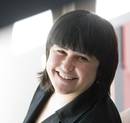Star scientists
A week before announcing the 2010 Nobel Laureates, ten Nobel Laureates gathered in Donostia at the central event celebrating the tenth anniversary of the DIPC. They aroused great expectation and for five days the small cube of the Kursaal was filled every day. They came as stars, were like stars and filled the halls every day attracted by the magnetism of the stars.
I say Izar because I want to claim the need for scientific stars in these lines. And it is that “nature” is not a particularly appreciated characteristic among scientists, as if an excessive prominence before society made it suspicious. But science also has its stars. It is undeniable the relevance that stars, in this case the Nobel Laureates, give to science and science communication. In addition, in this Basque country that has a single name, the list of prestigious scientists, we should not be afraid to fall into excesses.
The overflow of the Kursaal Palace was a great festival for scientific dissemination, and the fact that the public was attracted by the Nobel Prize, without excuse. In fact, as we were already on the eve of announcing the Nobel Prize and we had been able to talk to the Nobel Prize winners, we wanted to ask them about the influence of the prize on research. Knowing whether it drives the award-winning field or whether, on the contrary, it is too late by then, as the Novels are often collected in the years of their discovery. But for what we do, it does not matter when the Novel comes to them, because in all cases the Nobel Prizes become ambassadors of science, a star of science communication. And that's good, even though becoming a star will remain unsuspected and imperfect.






